This tent-like stage for Dekmantel electronic music festival was hand-sewn in the designer's studio
We speak to Zelt Studio founder Johannes Offerhaus, who created a tensile structure for the 2025 edition of the Dekmantel electronic music festival, about his design journey creating large-scale, textile-based works

The Dekmantel electronic music festival (30 July - 3 August 2025) returns within the expansive greenery of the Amsterdamse Bos – the city's expansive park – with its vast programme of international musical guests. This year, Zelt Studio founder Johannes Offerhaus has created a design for the 2025 edition's Selectors Stage, one of seven stages conceived for the festival by a diverse roster of creatives.
Curtain 01 is a canopy-like tensile structure surmounting the Selectors stage, making its debut on Friday 1 August, and which over the course of the weekend will see a plethora of live performances and DJ sets.
Dekmantel Festival 2025: Selectors Stage by Zelt Studio
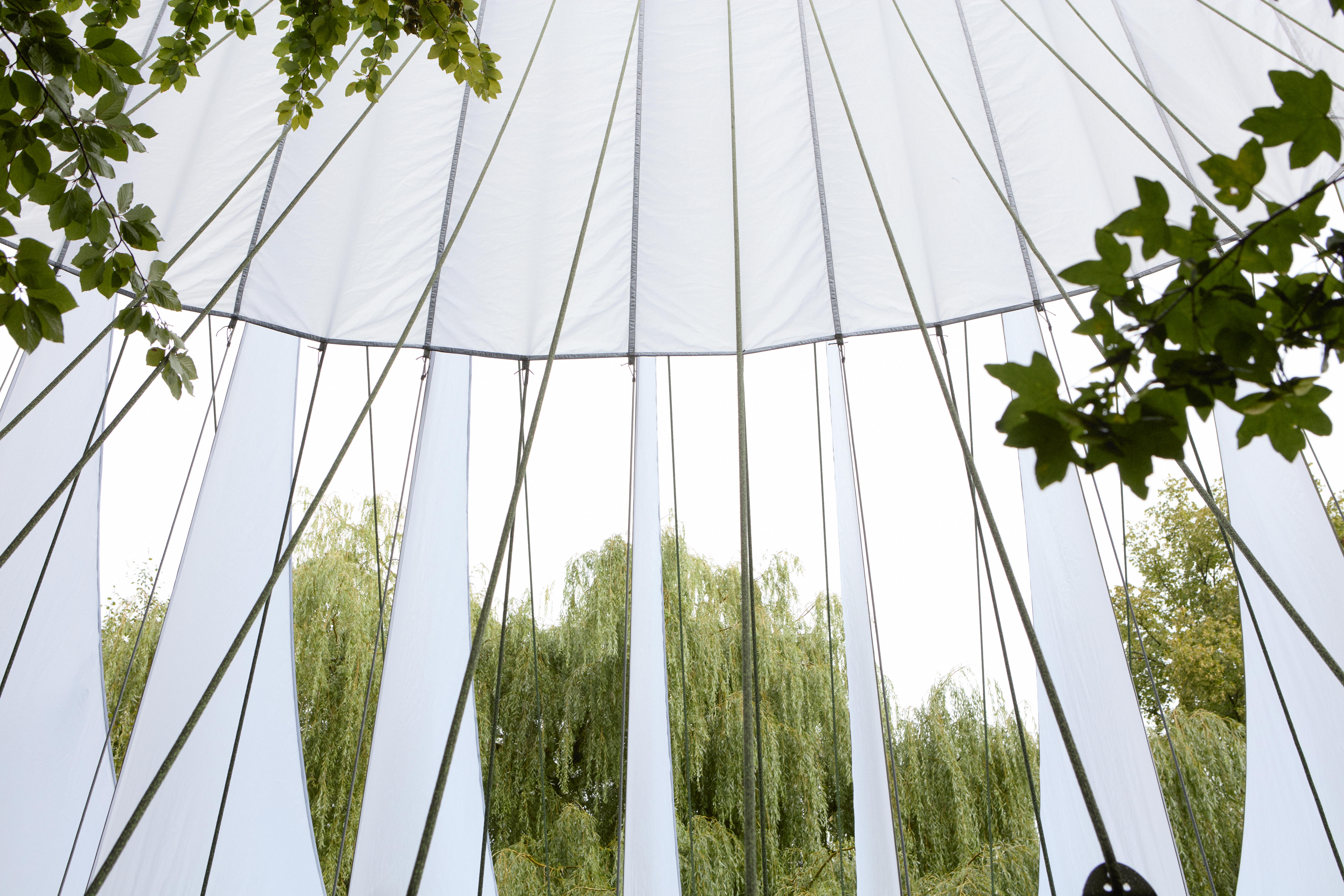
Designed and manufactured in-house by Offerhaus, a designer with a background in fashion and architecture working predominantly in textile spaces and experiences, the textile canopy is part of an ongoing research and experimentation into tensile structures and their large-scale opportunities.
Rain-proof and kept in place by steel anchors, the curtain will appear effortlessly floating, while in fact held in place by what the designer describes as a hand-made 'intricate system of ropes, aluminium and textile.'
We speak to Offerhaus to discover his work behind the stage design, and delve deeper into his practice's textile focus.
Q&A: Zelt Studio founder Johannes Offerhaus on his stage design
Wallpaper*: How did you transition from small-scale textiles and fashion, to working at this large scale?
Johannes Offerhaus: In the last three years, having worked on textile designs at a small scale – attached to the body, I really felt the need to scale up. I wanted my work to be very big – to offer a space for more than just one person. That’s when I started to explore new spaces for these installations to take life in. Dekmantel is a creatively exciting festival, both in terms of the acts playing, the music they bring to the stage, and the stage commissions themselves.
Receive our daily digest of inspiration, escapism and design stories from around the world direct to your inbox.
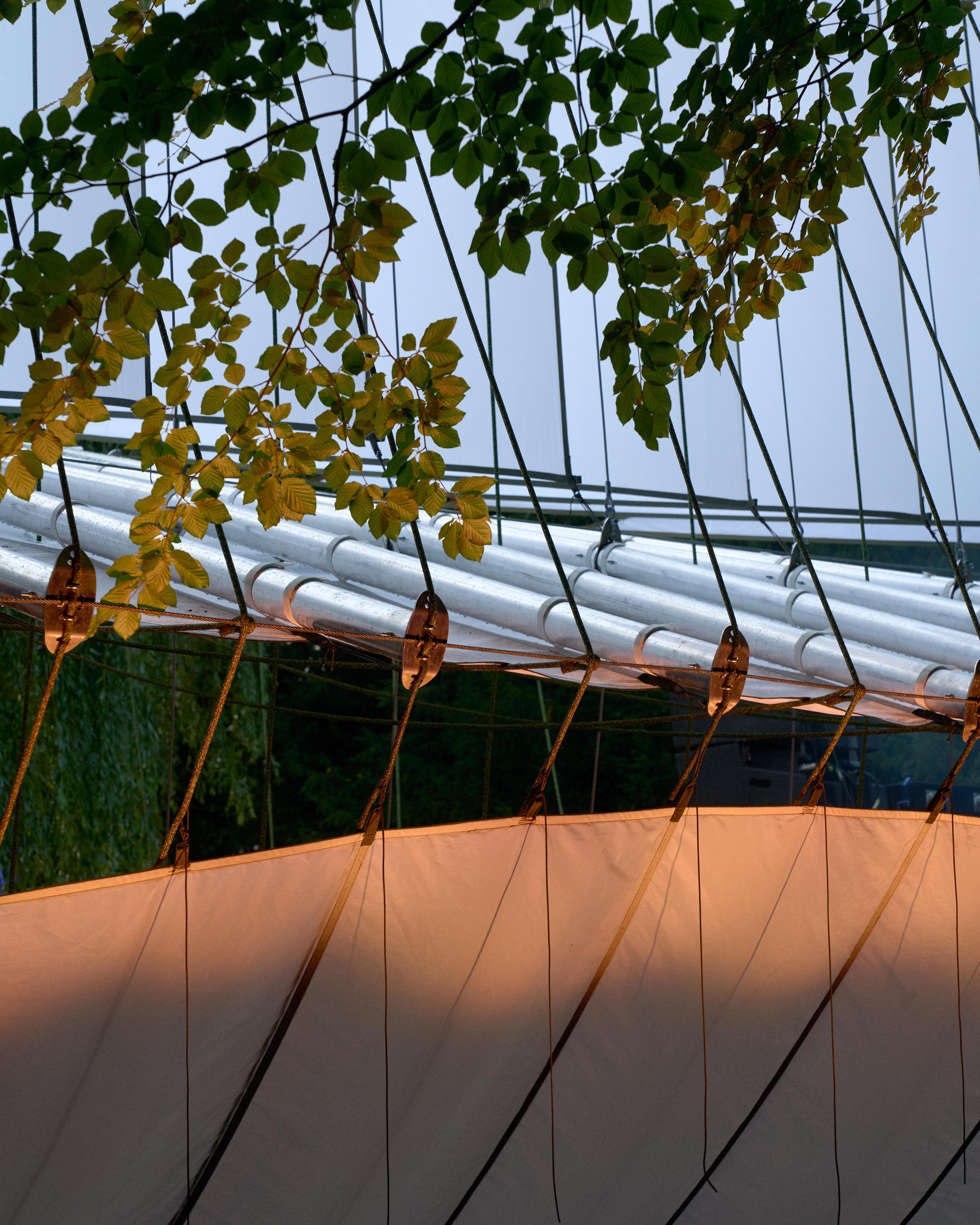
W*: How this commission come about?
JO: When Albert van Abbe (Creative Director at Dekmantel) and I started talking, it felt natural that we were both excited to apply my design ethos and expertise to the Selectors Stage, to give it a whole new character and experience. He conceptualised a DJ booth assembled from pre-fab concrete elements that would form the ‘perfect base’ for playing vinyl. My task was to find a solution, both practical and beautiful, that would do the “undisputed Dekmantel favourite” stage justice. The heavy concrete - a perfect anchor point - naturally invited in a lightweight (visually and literally) textile tensile piece.
W*: How did you conceive the structure?
JO: My process always starts quite intuitively. I'm a trained pattern cutter/fashion designer, so just like in a draping process where form-finding is done around a human body, I start modelling and prototyping with textiles. Only my canvas is not the human body anymore, it's space.
W*: Did any external factor inform or influence the design?
JO: The location and the identity of the stage formed the outset of this project. The location of the Selectors Stage is so intimate and beautiful between the trees of the Amsterdamse Bos. There is this moment at the end of the day, around 8PM, when the dimmed sunlight shines through the trees and you get this komorebi effect on everything. I just want to add to that experience.
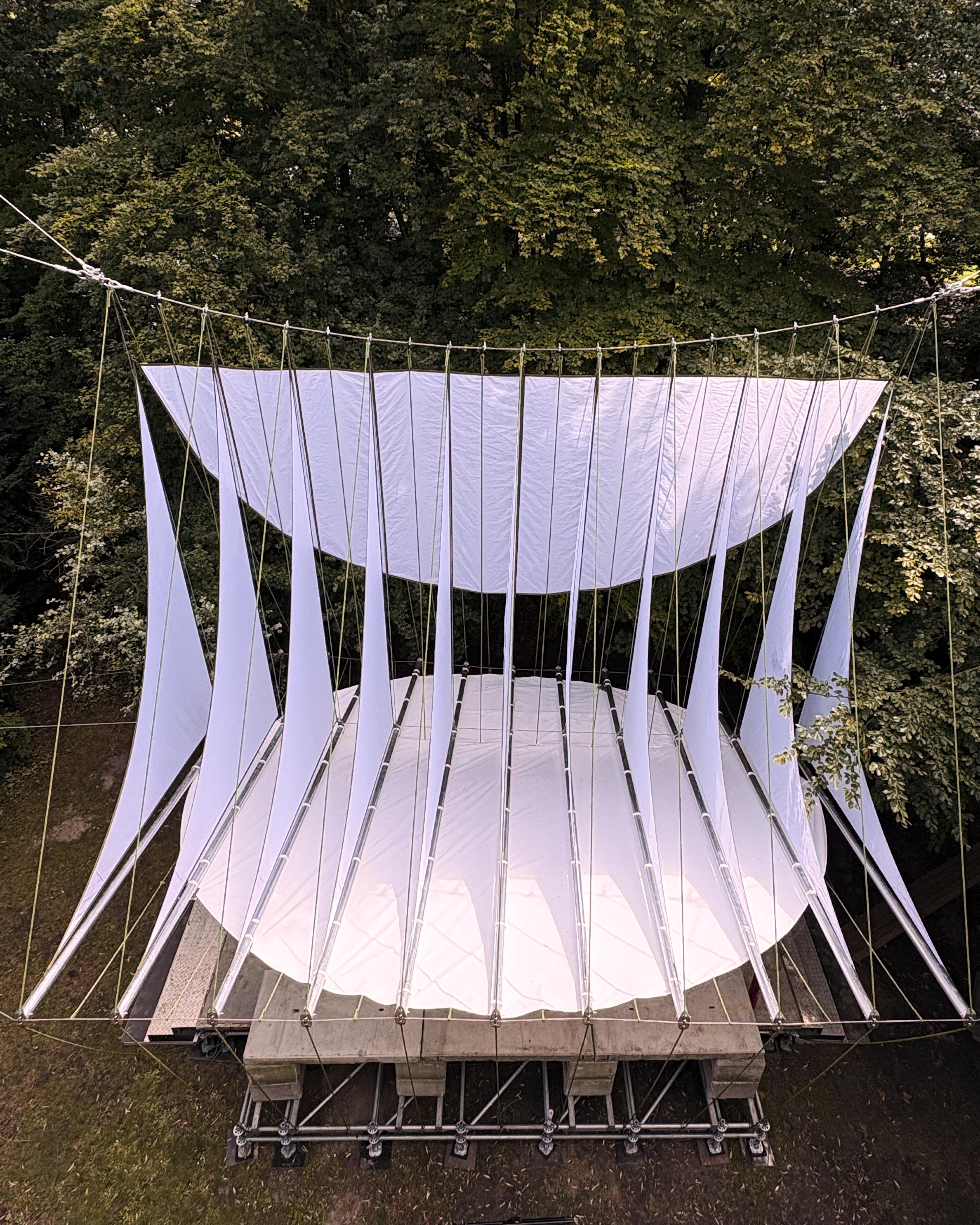
W*: What materials and techniques did you use?
JO: Since my installations are mostly form-focused, I always make use of the same set of materials and techniques. Parachute textiles, webbing tape, ropes, cables, and steel. We use an array of old heavy-duty German sail-making machines to stitch everything together. It's very important for me to keep this in-house; we machine sew everything in my studio in Amsterdam Noord. It gives us a really good understanding of the materials and their limitations. Every time we stitch something together, we learn something for the next time. Stitching all these curves into fabric with a minimum amount of wrinkles is the result of the accumulation of those learnings.
W*: What did you learn by working in this way?
JO: The first time I made an installation of this size, I noticed that the design was very clear, until you get all the fabric cut and you have to assemble it. You quite easily get lost among the heaps of fabric behind the sewing machine. And you can't just easily hang these things to check if you did the assembly correctly (I don’t have a studio that big, yet!). Only two days before a festival like this, we know if you have been successful. So now we have a very dogmatic set of steps that we follow in order to be 100 per cent sure things will work out.
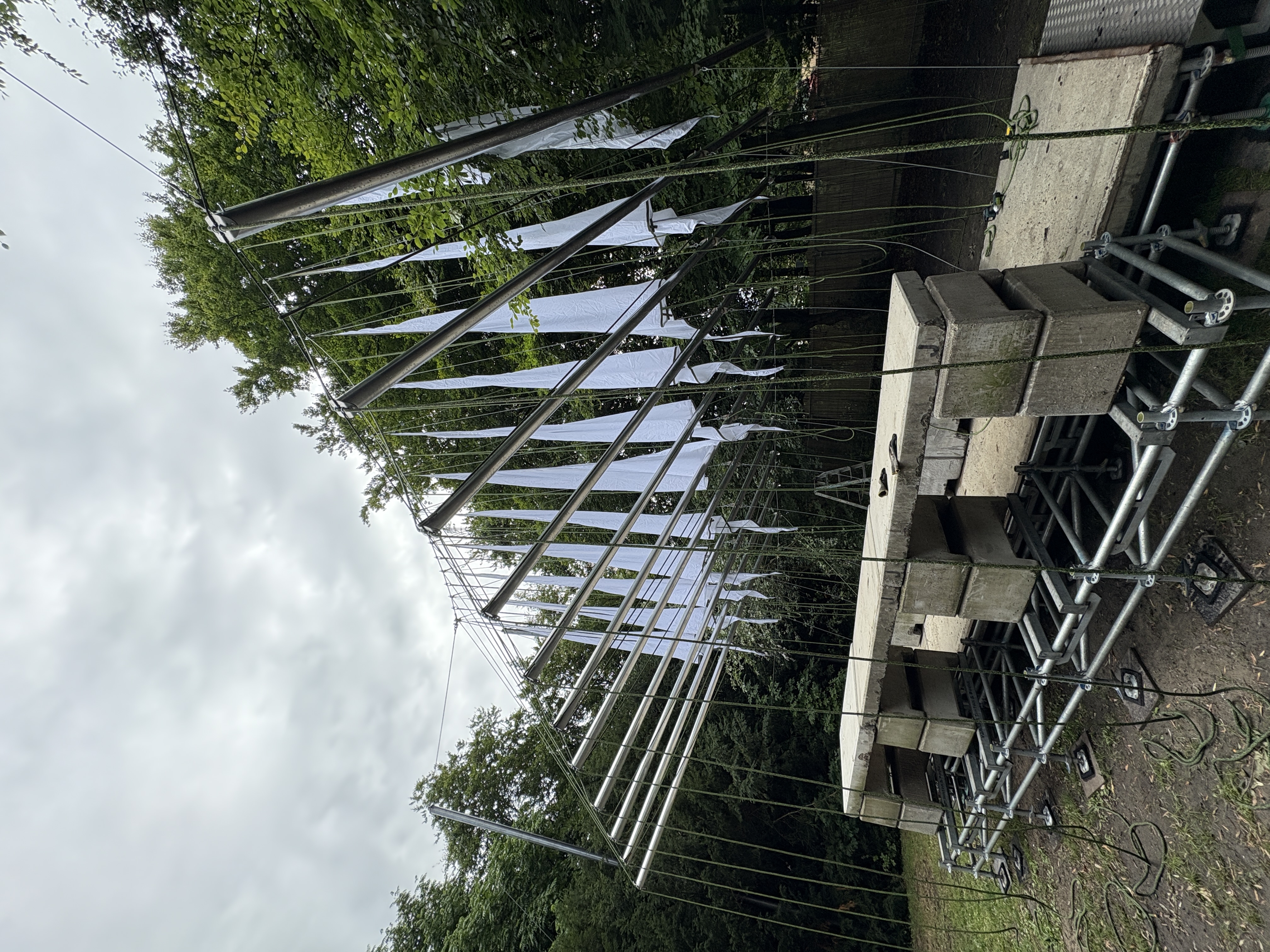
W*: What can you anticipate about the festivalgoer’s experience related to your stage design?
JO: What I think is really nice about my output is that my work is done when a festival starts, I don't have to inform the spectator how to interpret the work, and I don't have to present it to them. I can dissolve in the crowd. This makes me able to just look around for unfiltered moments of people interacting with the work. I always take a moment to walk around alone to observe. Obviously, the moment the festival starts, my work merges together with that of others, light designers, sound engineers, DJs, performers, and so I become the spectator as well.
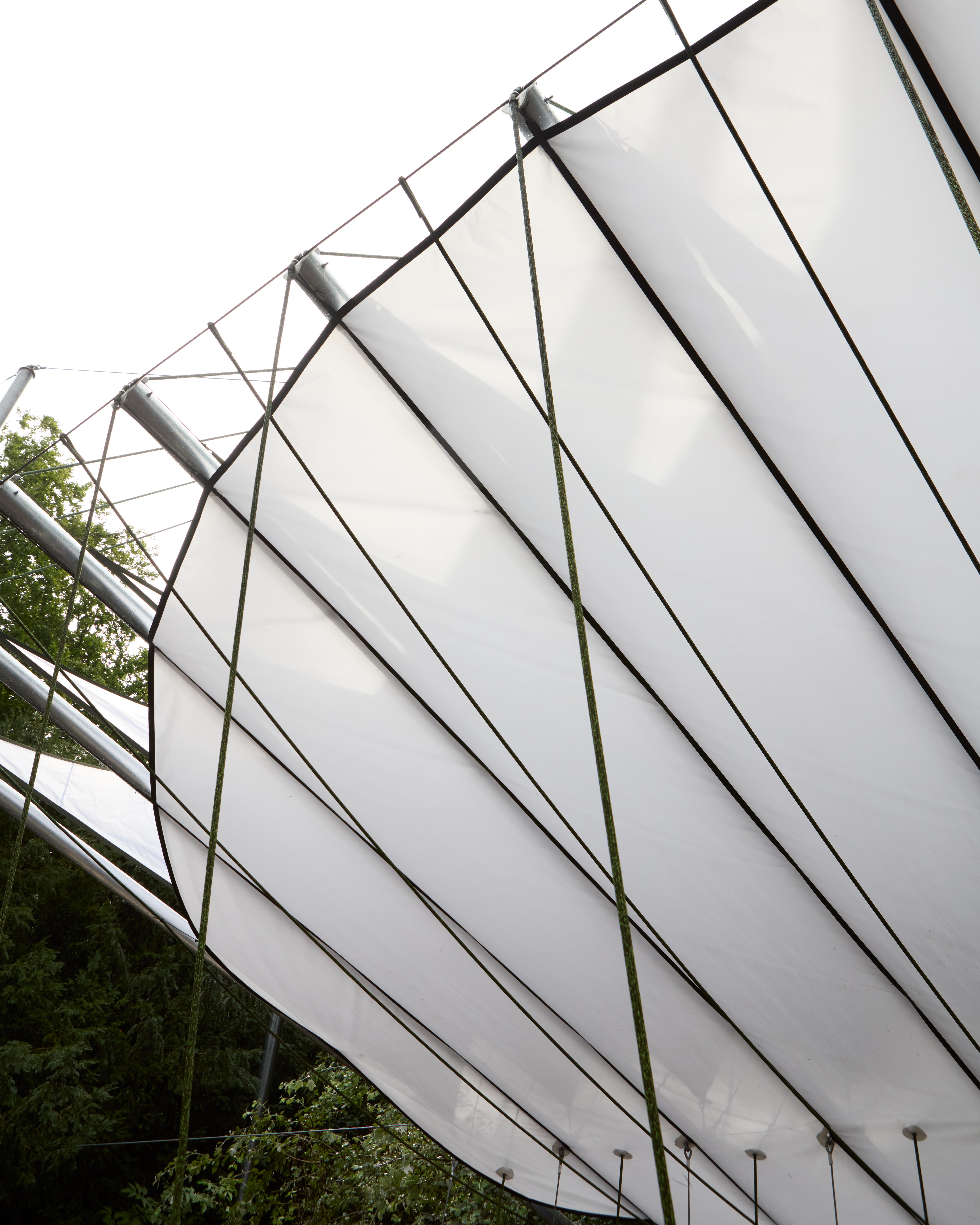
W*: What other elements are going to interact with your stage structure?
JO: Albert van Abbe commissioned Zalán Szakács to create a light design for the Selectors stage this year. It's inspired by 1970s science fiction film sets and rock concerts from the same era, such as the one from Pink Floyd in Pompei. The lights have a halogen type of character: warm whites, amber, and light blues mix in order to create an interesting interplay and otherworldly feeling. It's interesting, you know. To see Zalán already interpreting this design in his own way. He told me the first time he saw the model that it looked like some kind of intergalactic sailing ship.
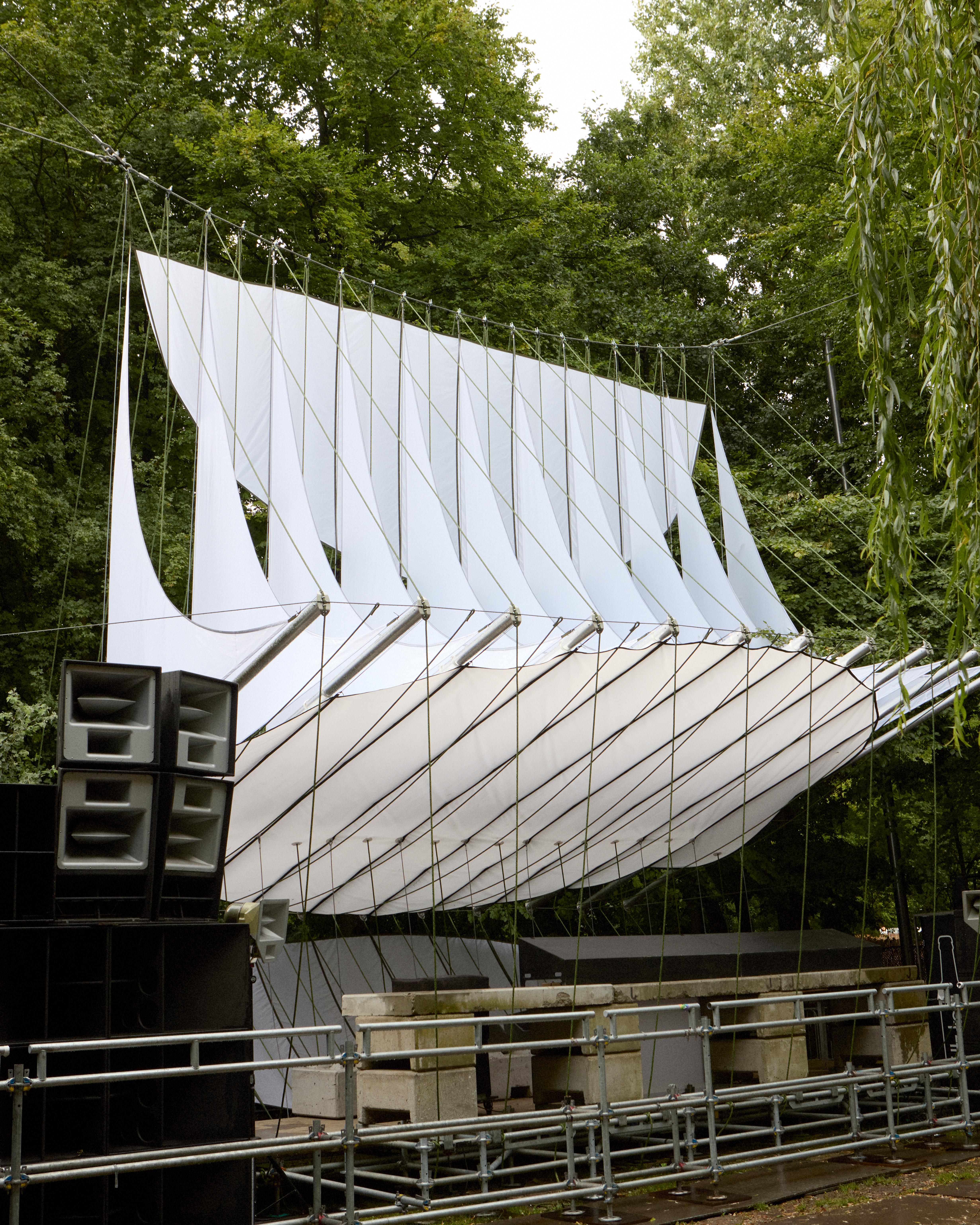
W*: How will the stage design contribute to the performance?
JO: I always aim to make my installations visually interesting from all sides, even backstage. In contrast to more traditional festival scenography, it doesn't just look good facing forward, and from the back, you are looking at zip ties, duct tape, and stapled fabric. I aim to make sure the stage doesn't just have a face but that it is a space. I hope performers on this stage will recognize that as well, and feel comfortable and at home while playing. I also focused on integrating a functional rain cover in the design, the circular horizontal tarp. It rains a lot in the Netherlands!
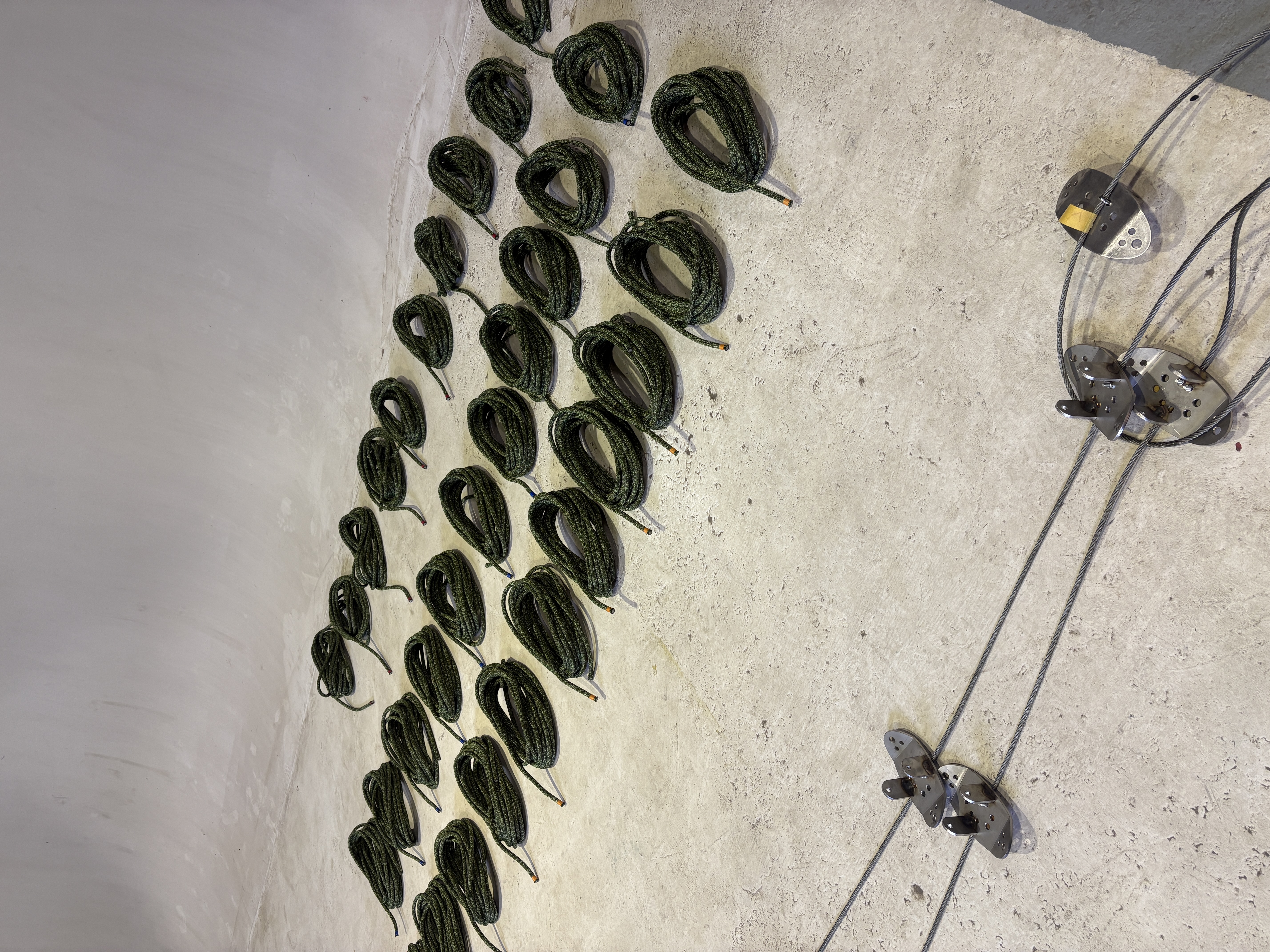
W*: Designing with suspended fabric and tension is a focus of your practice - can you tell me more about how you got to this point, and what key projects have come before this?
JO: I started my career as a fashion designer, and even earlier was interning in a haute couture house. Looking back, I now see that I was basically collaging a lot of scale models for potential large installations, but then it was around a human body. I always struggled to make functional clothing and pieces that were so close to the human body.
Next to these technical couture pieces, I also designed larger installations. I really enjoyed making them. It was a design direction that flowed much better for me. So I decided to focus on my spatial design work. But coming from a fashion design studio, I felt a bit lost not knowing how to give meaning to these pieces or what the function of my installations was.
During a pre master Architecture in Amsterdam, I got into contact with the work of lightweight/tensile architects like Frei Otto. Unfortunately, the focus of the institute I was studying at was not in that direction (we spent all day talking about concrete, double glazing, and optimum positioning of toilets), so I decided to stop my studies and crawl back behind my sewing machines.
I started Zelt Studio (Zelt is German for ‘tent’) and continued making my textile installations, learning on the go. Luckily, I found a really good sparring partner and mentor in Harmen Werkman from the company Tentech, who helped with all my engineering. The time he makes for me within our work relationship to help me grow is invaluable.
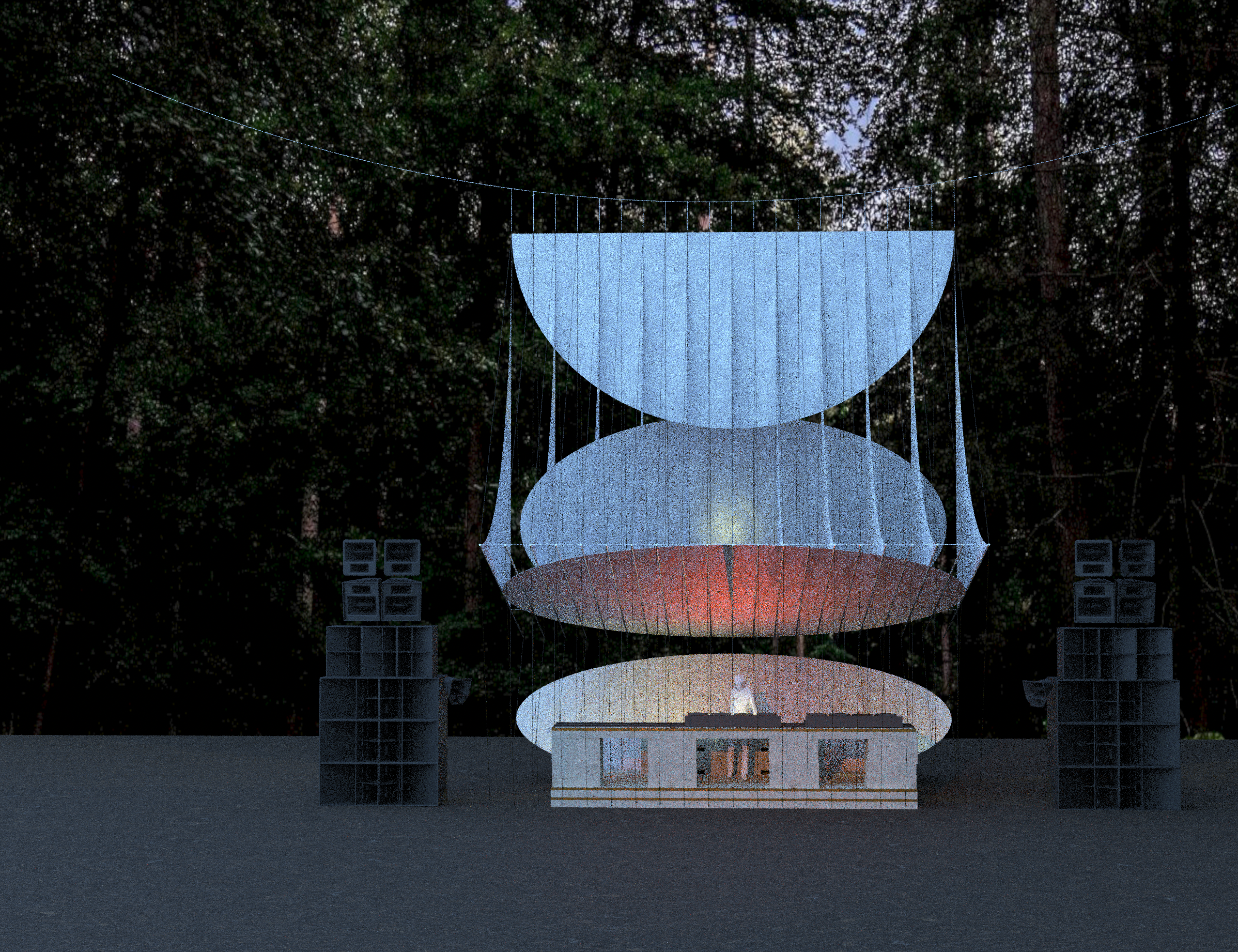
W*: How would you define what you do?
OH: By calling my installations “tents,” I am forcing myself to slowly find a purpose and function for them. Last year, I designed a large textile installation for the Down the Rabbit Hole festival. I think this installation was the first one I can safely count as part of my tent designs. Even though it still has little more function than offering designed ‘hammocks’ for tired festival-goers and shading. Ultimately, it is a gateway for the terrain.
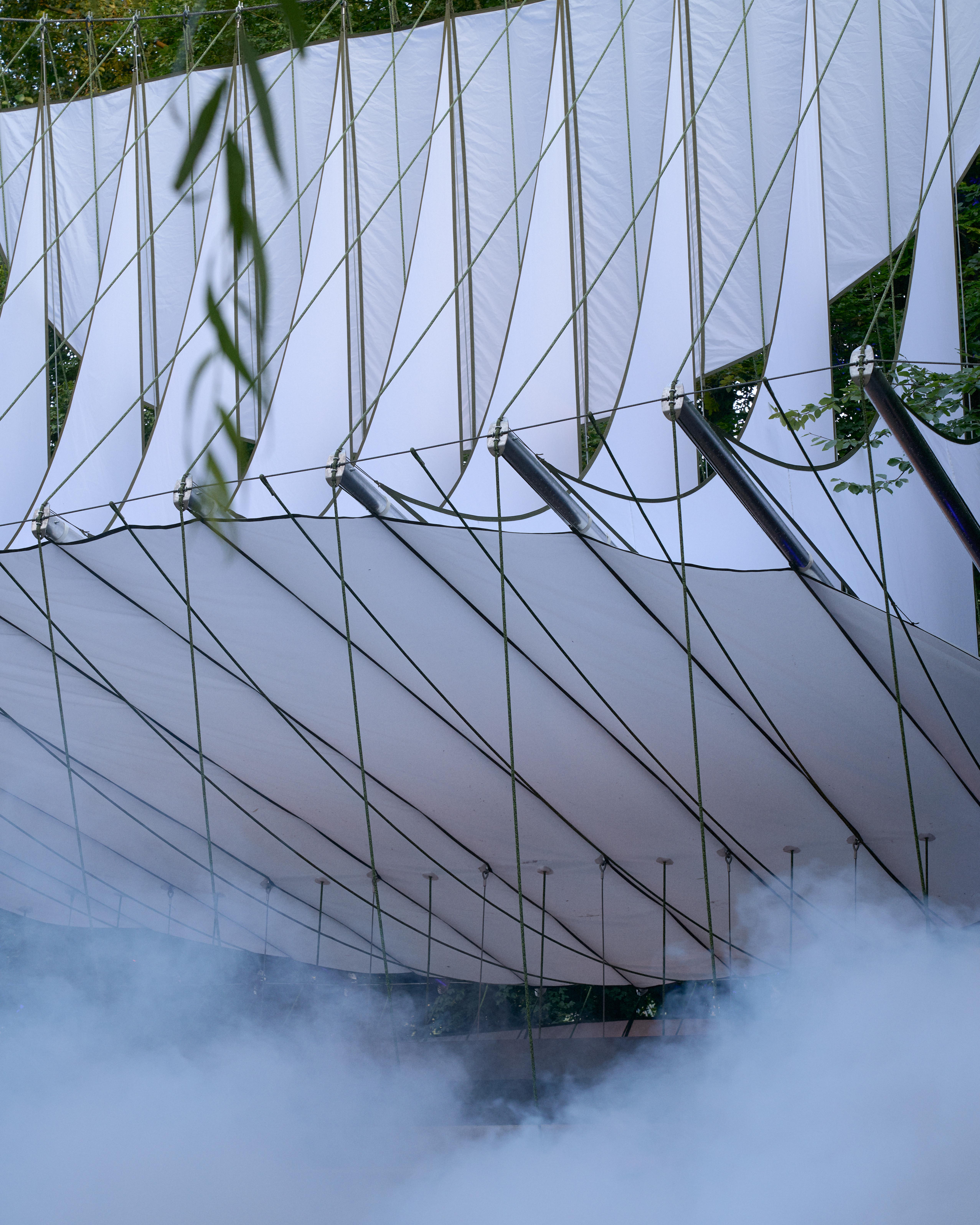
W*: Why is it important for you to design and build in this way?
JO: I think the way I build is very complementary to my design language. The shapes are expressive, 3-dimensional, bold, and the building materials and techniques I use are soft, lightweight, and friendly. As much as I am a designer, I am a craftsman. A lot of the aesthetic value of the installations is in the execution of all these technical details. Attention to detail is extremely important to me.

Rosa Bertoli was born in Udine, Italy, and now lives in London. Since 2014, she has been the Design Editor of Wallpaper*, where she oversees design content for the print and online editions, as well as special editorial projects. Through her role at Wallpaper*, she has written extensively about all areas of design. Rosa has been speaker and moderator for various design talks and conferences including London Craft Week, Maison & Objet, The Italian Cultural Institute (London), Clippings, Zaha Hadid Design, Kartell and Frieze Art Fair. Rosa has been on judging panels for the Chart Architecture Award, the Dutch Design Awards and the DesignGuild Marks. She has written for numerous English and Italian language publications, and worked as a content and communication consultant for fashion and design brands.
-
 Inside Christian de Portzamparc’s showstopping House of Dior Beijing: ‘sculptural, structural, alive’
Inside Christian de Portzamparc’s showstopping House of Dior Beijing: ‘sculptural, structural, alive’Daven Wu travels to Beijing to discover Dior’s dramatic new store, a vast temple to fashion that translates haute couture into architectural form
-
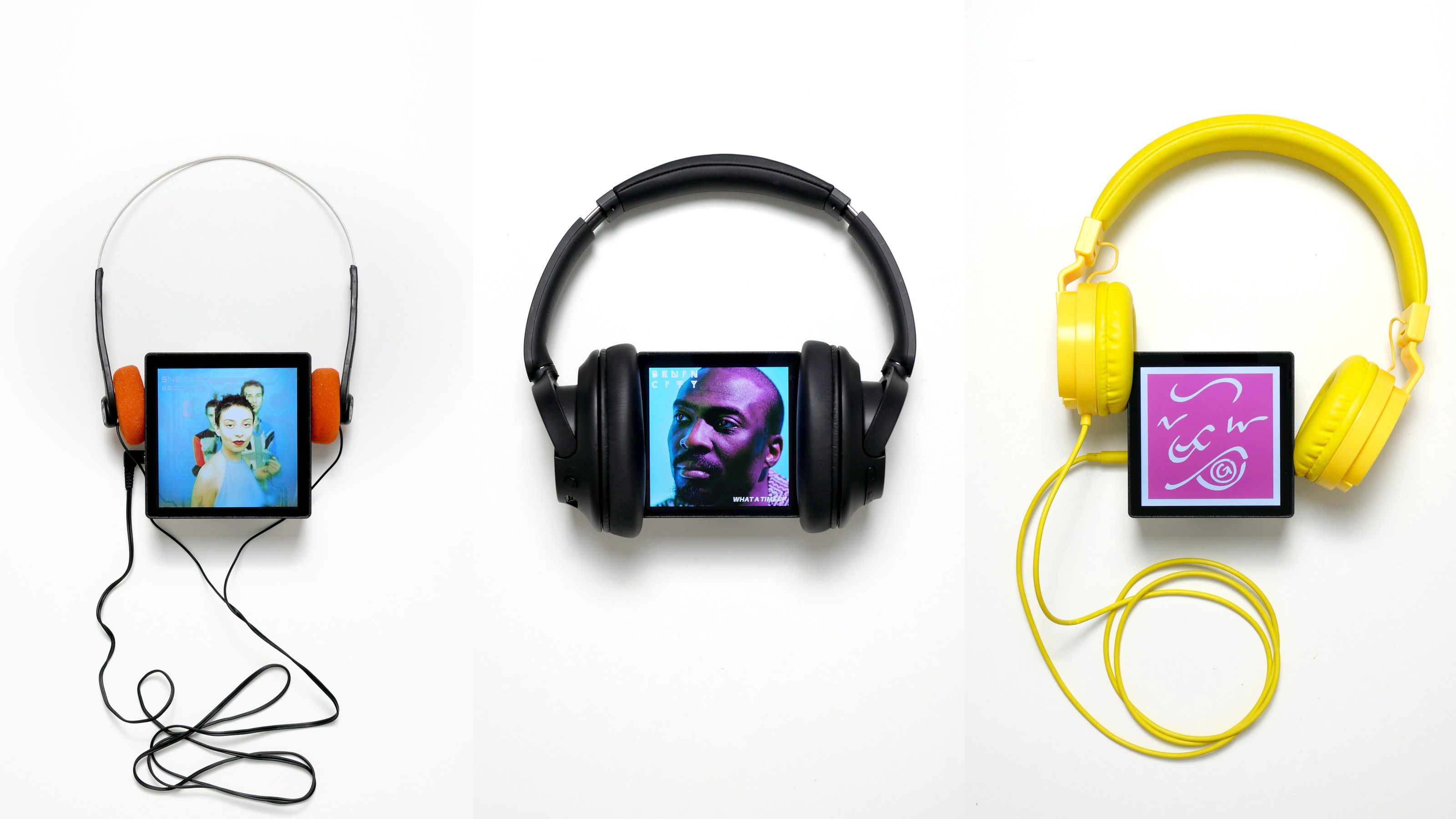 A music player for the mindful, Sleevenote shuns streaming in favour of focused listening
A music player for the mindful, Sleevenote shuns streaming in favour of focused listeningDevised by musician Tom Vek, Sleevenote is a new music player that places artist intent and the lost art of record collecting at the forefront of the experience
-
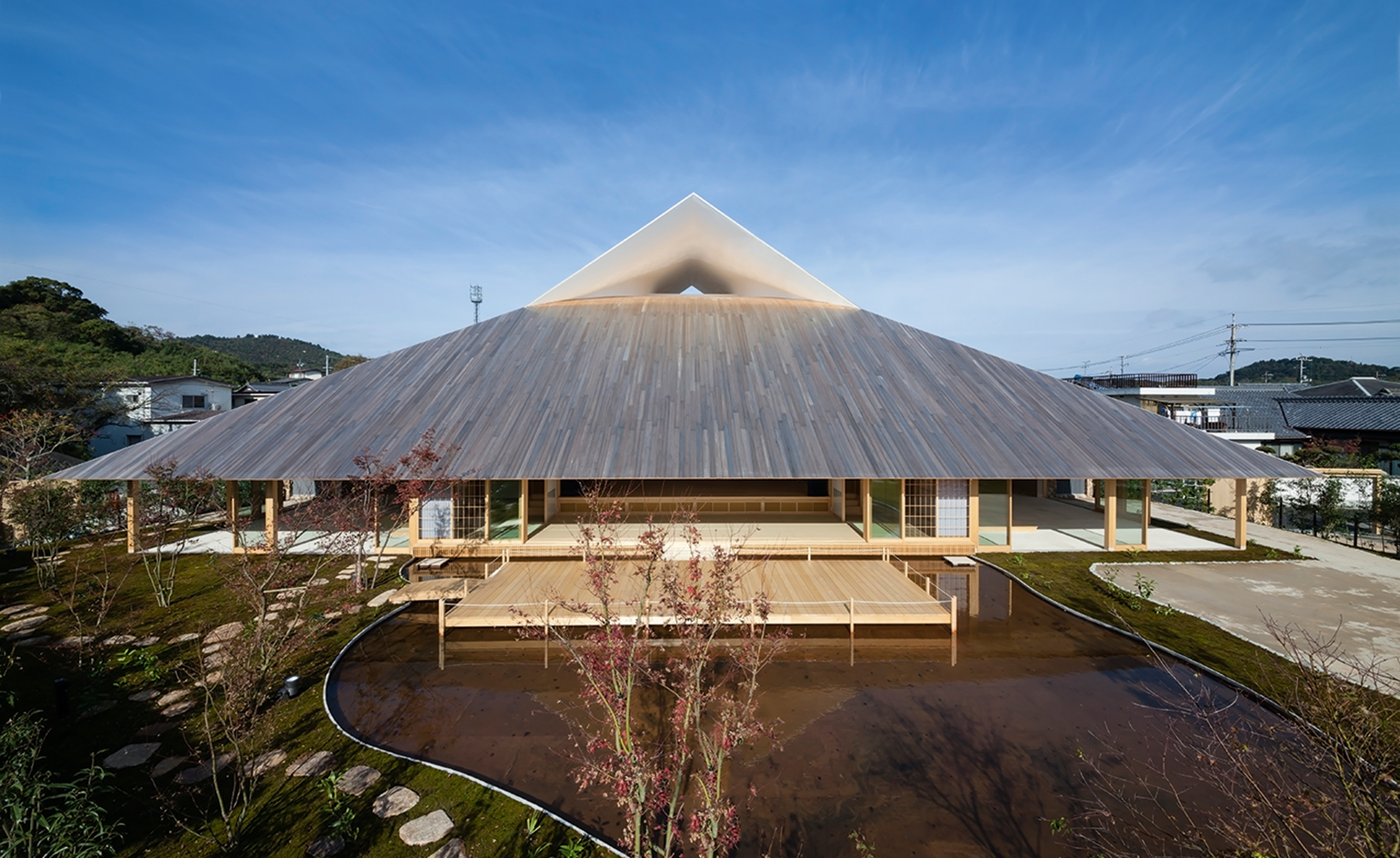 Take a tour of the 'architectural kingdom' of Japan
Take a tour of the 'architectural kingdom' of JapanJapan's Seto Inland Sea offers some of the finest architecture in the country – we tour its rich selection of contemporary buildings by some of the industry's biggest names
-
 SolidNature and Sabine Marcelis make a splash with ‘The Vondel Fountain, Stacked’ in Amsterdam
SolidNature and Sabine Marcelis make a splash with ‘The Vondel Fountain, Stacked’ in AmsterdamWe see stone company SolidNature’s fountain unveiled during Amsterdam Fashion Week, and speak to its CEO learn about the brand’s past and future
-
 Rijksmuseum Vermeer exhibition inspires special-edition design objects
Rijksmuseum Vermeer exhibition inspires special-edition design objectsThe Rijksmuseum Vermeer exhibition is now sold out until it closes on 4 June 2023, but you still have a chance to shop the specially-created objects inspired by the Dutch painter, available from the museum shop and online
-
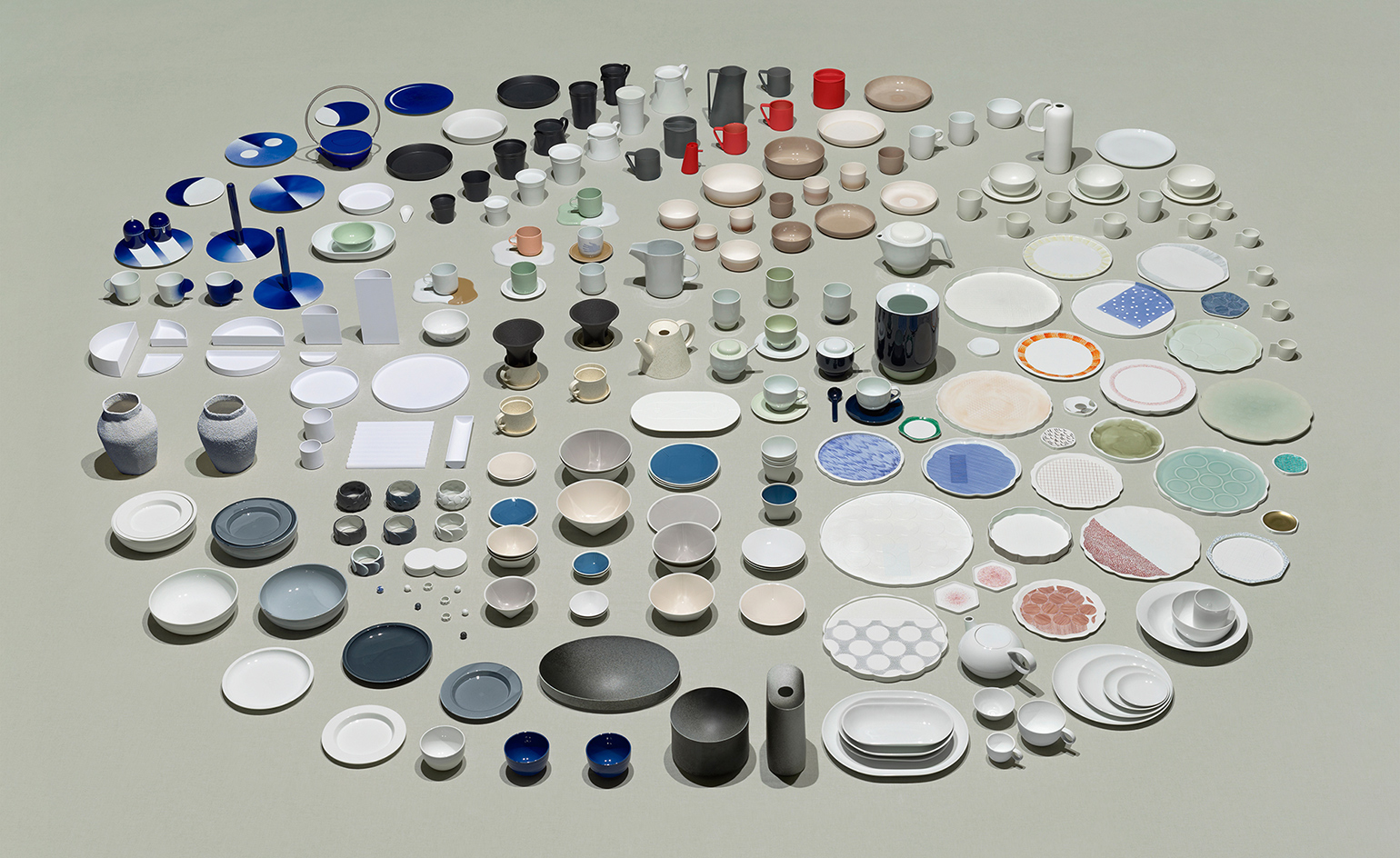 Clay collective: Arita House opens in Amsterdam, displaying perfect porcelain
Clay collective: Arita House opens in Amsterdam, displaying perfect porcelain -
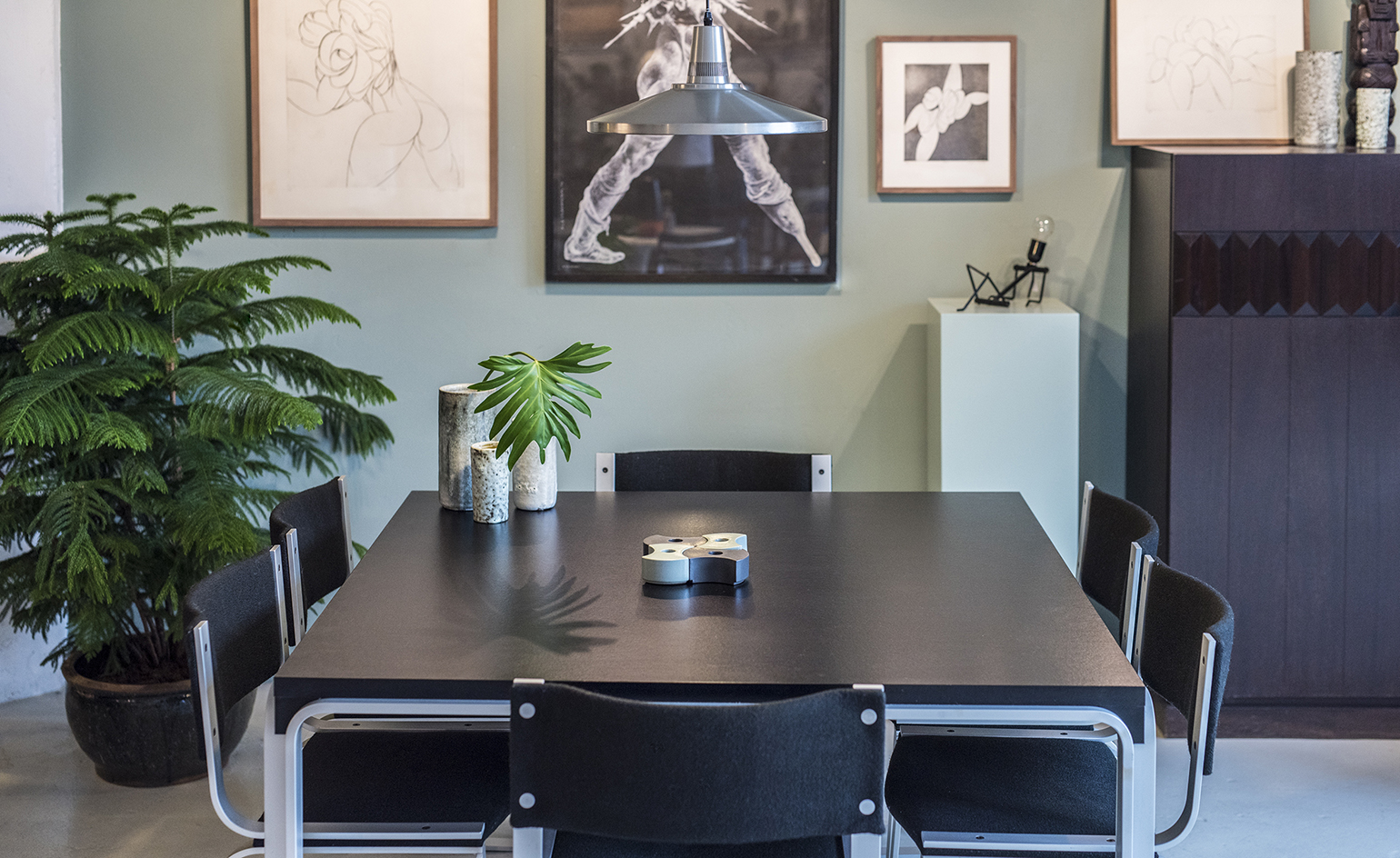 Physical finds: Julien Rademaker opens Amsterdam interior design salon
Physical finds: Julien Rademaker opens Amsterdam interior design salon -
 A bright new age: the Rijksmuseum reopens after a 10 year renovation
A bright new age: the Rijksmuseum reopens after a 10 year renovation